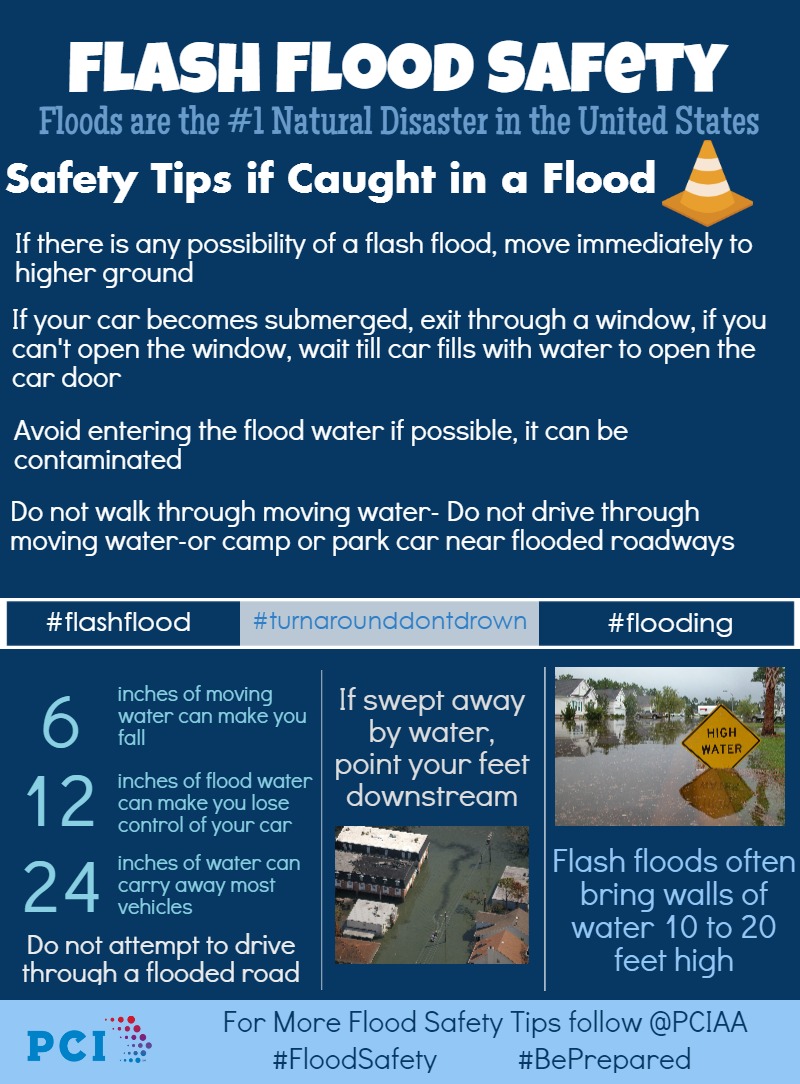How To Prepare For And Respond To Flash Flood Warnings And Alerts

Table of Contents
Understanding Flash Flood Warnings and Alerts
The Difference Between a Watch and a Warning
It's vital to understand the distinction between a flash flood watch and a flash flood warning:
-
Flash Flood Watch: This means conditions are favorable for flash flooding to develop. Heavy rain is possible, and you should monitor weather reports closely. Stay alert and be prepared to act quickly if conditions worsen.
-
Flash Flood Warning: This is a serious alert! A flash flood is happening or is imminent. Take immediate action to protect yourself and your property. Evacuation may be necessary.
Actions to take:
- Watch: Monitor weather forecasts, review your emergency plan, and gather your emergency kit.
- Warning: Immediately move to higher ground. Do not attempt to drive through floodwaters. Follow evacuation orders.
Sources of Information
Receiving timely alerts is paramount. Utilize multiple sources for the most comprehensive information:
- National Weather Service (NWS): Check the NWS website and their mobile app for the latest forecasts and warnings in your area.
- Weather Apps: Numerous weather apps (like AccuWeather, The Weather Channel) provide real-time alerts and radar imagery.
- Local News: Stay informed through local television and radio broadcasts.
- Emergency Alert System (EAS): Your phone will receive emergency alerts through Wireless Emergency Alerts (WEA) if you have this enabled. Ensure your phone's settings are configured correctly.
Choosing multiple sources ensures you receive comprehensive and timely information during severe weather events.
Recognizing Flash Flood Indicators
Recognizing the signs of an impending flash flood can give you precious time to react:
- Rapidly rising water levels: Noticeably increasing water levels in streams, rivers, or normally dry areas are serious warning signs.
- Overflowing rivers and streams: Water exceeding the banks of rivers and streams indicates imminent flash flooding.
- Intense rainfall: Prolonged or unusually heavy rainfall is a major trigger for flash floods.
- Unusual sounds: The roar of rushing water, even from a distance, warrants immediate attention.
- Changes in landscape: Observe if normally dry areas are becoming inundated with water quickly.
Being aware of these visual and auditory cues allows for faster response times during a flash flood emergency.
Preparing for a Flash Flood
Developing a Family Emergency Plan
A well-defined family emergency plan is crucial:
- Identify evacuation routes: Plan multiple escape routes from your home and workplace.
- Establish meeting points: Designate both a nearby and a distant meeting point in case you get separated.
- Develop communication strategies: Ensure everyone knows how to contact each other, including alternative methods in case cell service is down.
- Consider special needs: Plan for the needs of elderly family members, children, or individuals with disabilities.
Regularly practice your evacuation plan to ensure everyone knows what to do in an emergency.
Building an Emergency Kit
Your emergency kit should include:
- Water: One gallon per person per day for several days.
- Food: Non-perishable items, easy-to-prepare meals, and snacks.
- First-aid kit: Include essential medications and any personal medical supplies.
- Important documents: Copies of identification, insurance policies, and other vital papers in a waterproof container.
- Flashlight and extra batteries: A reliable light source is critical during power outages.
- Radio (battery-powered): To receive emergency broadcasts.
- Whistle: To signal for help.
- Cash: ATMs may be unavailable.
Store your kit in a readily accessible location and regularly check the expiration dates of food and medications.
Protecting Your Property
Minimizing flood damage to your property is essential:
- Elevate valuable items: Move important belongings, electronics, and furniture to higher levels.
- Install flood barriers: Consider installing sandbags or flood barriers around your home.
- Clean gutters and downspouts: Ensure proper drainage to prevent water buildup around your foundation.
- Protect your vehicle: Park your car in a safe location away from low-lying areas.
- Secure outdoor items: Bring in loose objects that could be carried away by floodwaters.
Taking preventative measures can significantly reduce the impact of a flash flood on your property.
Responding to a Flash Flood Warning or Alert
Evacuation Procedures
Heeding evacuation orders is paramount:
- Secure your home: Lock doors and windows, turn off utilities if possible and safe to do so.
- Bring your emergency kit: Take your pre-packed emergency kit with you.
- Choose safe transportation: Avoid driving unless absolutely necessary. Use higher ground transportation if available.
- Follow designated routes: Obey instructions from emergency personnel.
Never attempt to drive through floodwaters; the depth may be deceptive and the currents incredibly strong.
Safe Practices During a Flash Flood
If caught in a flash flood:
- Seek higher ground immediately: Move to the highest point possible, away from floodwaters.
- Avoid driving through floodwaters: Even a few inches of water can sweep your vehicle away.
- Do not walk or swim in floodwaters: The water may be contaminated and currents are unpredictable.
- Stay away from power lines: Floodwaters can be electrically charged.
- Listen to emergency broadcasts: Stay updated on the situation.
Your safety is the top priority during a flash flood. Do not take unnecessary risks.
Post-Flood Actions
After the flash flood subsides:
- Assess damage: Check for structural damage, gas leaks, and electrical hazards.
- Contact your insurance company: Report damages promptly and follow their instructions for filing claims.
- Seek assistance: Contact local authorities or emergency services for help with cleanup and recovery.
- Dispose of contaminated materials safely: Follow guidelines for safe disposal of flood-damaged items.
- Document all damages: Take photos and videos to support insurance claims.
Thorough documentation and prompt action will aid in the recovery process after a flash flood.
Conclusion
Preparing for and responding to flash flood warnings and alerts requires proactive measures and a well-defined plan. By understanding the difference between a watch and a warning, developing a comprehensive family emergency plan, building an emergency kit, and taking preventative measures to protect your property, you can significantly mitigate the risks associated with flash floods. Remember to stay informed about weather conditions, heed evacuation orders, and practice safe procedures during and after a flash flood. Share this vital information with friends and family; community preparedness for flash floods is crucial. Develop your flash flood preparedness plan today and protect yourself and your loved ones.

Featured Posts
-
 Southern Tourist Destination Disputes Safety Concerns Following Violence
May 25, 2025
Southern Tourist Destination Disputes Safety Concerns Following Violence
May 25, 2025 -
 Apple Stock Wedbushs Long Term Bullish Prediction After Price Target Cut
May 25, 2025
Apple Stock Wedbushs Long Term Bullish Prediction After Price Target Cut
May 25, 2025 -
 Dispute Erupts Over Pilbaras Future Rio Tinto Vs Andrew Forrest
May 25, 2025
Dispute Erupts Over Pilbaras Future Rio Tinto Vs Andrew Forrest
May 25, 2025 -
 Following Kyle Walkers Night Out Annie Kilners Posts And The Poisoning Allegations
May 25, 2025
Following Kyle Walkers Night Out Annie Kilners Posts And The Poisoning Allegations
May 25, 2025 -
 Queen Wens Parisian Return A New Chapter
May 25, 2025
Queen Wens Parisian Return A New Chapter
May 25, 2025
Latest Posts
-
 Atletico Madrid In 3 Maclik Durgunlugun Sonu
May 25, 2025
Atletico Madrid In 3 Maclik Durgunlugun Sonu
May 25, 2025 -
 3 Maclik Bekleyisin Ardindan Atletico Madrid In Zafere Ulasmasi
May 25, 2025
3 Maclik Bekleyisin Ardindan Atletico Madrid In Zafere Ulasmasi
May 25, 2025 -
 Atletico Madrid 3 Maclik Kara Seri Sonlandi
May 25, 2025
Atletico Madrid 3 Maclik Kara Seri Sonlandi
May 25, 2025 -
 Atletico Madrid In 3 Maclik Yenilmezlik Serisi
May 25, 2025
Atletico Madrid In 3 Maclik Yenilmezlik Serisi
May 25, 2025 -
 Atletico Madrid In 3 Maclik Hasreti Zaferle Son Buldu
May 25, 2025
Atletico Madrid In 3 Maclik Hasreti Zaferle Son Buldu
May 25, 2025
